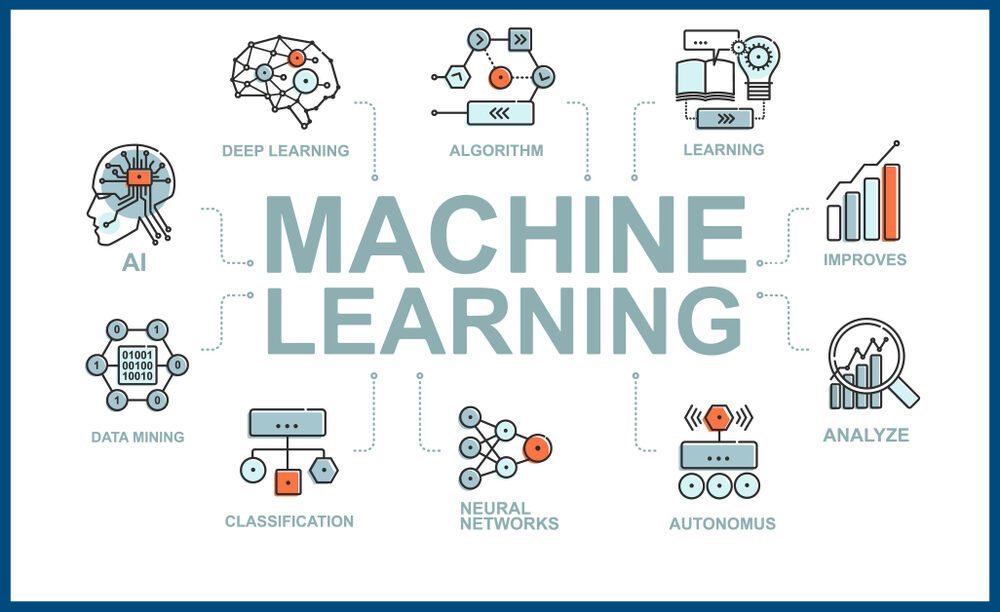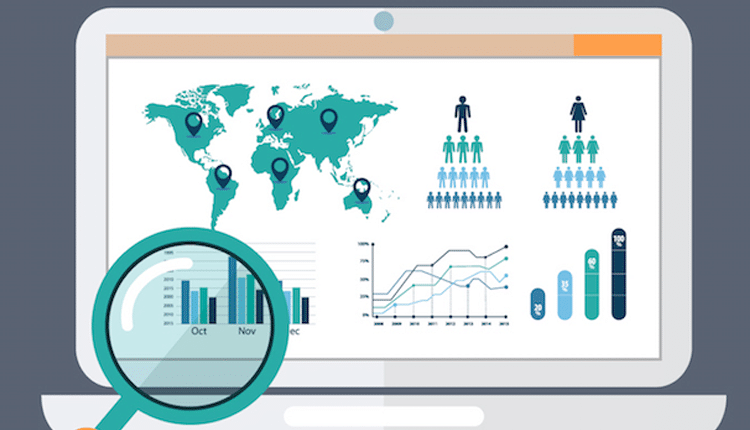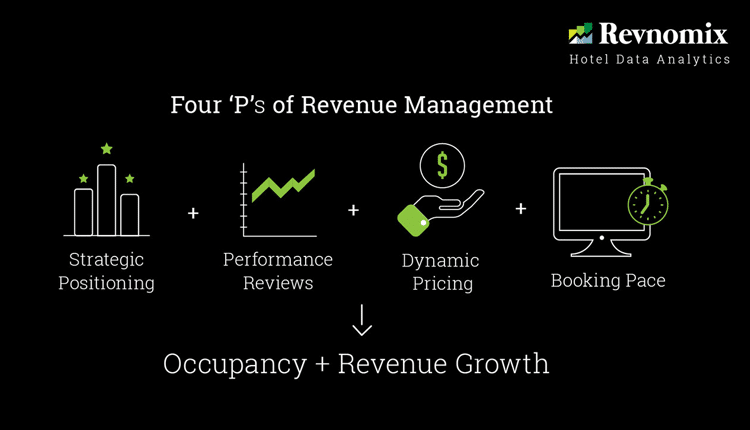We have already discussed what is revenue management in hotels. To sell rooms, tickets, and services to the right consumers at the right moment and price, the travel industry uses (RM) revenue management roles and methods. This intricate task includes a number of elements that are affected by demand, market dynamics, consumer behavior, and demographics.
- Demand Forecasts
- Segmentation of Guests
- Pricing Strategies
- Yield Optimization
Since all four are affected by digital transformation, we’ll focus on revenue management and pricing and the use of dynamic pricing for hotels. By re-calculating the demand/supply spectrum, dynamic pricing and revenue management enable hotels to modify prices on demand.
Hotel brands like Marriott and Hilton released their first Revenue Management Systems in the early years of this century. It marks the very first known app for dynamic pricing by a hotel. But, for the past 30 years, airlines have been using RM procedures. The digital revolution in RM has not yet taken place as time goes on. The transition inside the hotel sector from basic legacy systems to smart data-driven solutions is slow. In this post, we’ll talk about cutting-edge revenue management in hospitality industry and explain how data analysis enables the design of accurate and reliable dynamic pricing applications.
How to increase hotel revenue? Looking for revenue management companies? Click below.
Know More About Top Revenue Management Companies in India
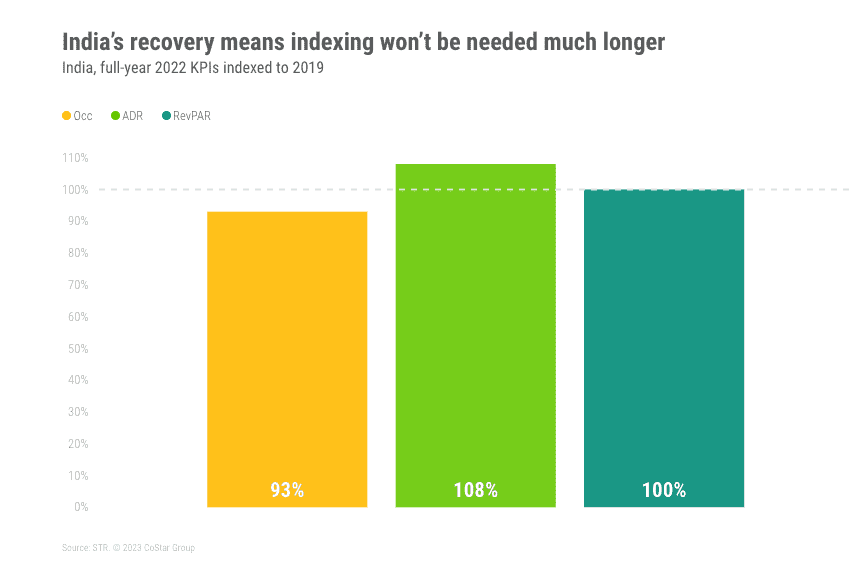
Recovery of RevPAR was more driven by the average daily rate (ADR).
Image credit – https://str.com/
Key Facts
1. India’s hotel industry turned into a stellar 2022 with RevPAR 100% recovered to pre-pandemic levels.
2. Recovery of RevPAR was more driven by ADR, which indexed at 108 when compared with 2019 levels.
3. Occupancy recovery was strong as well with an index of 93.
4. India witnessed steeper declines but sharper inclines after every wave of COVID-19.
5. While India’s economy class lagged in terms of pace, all classes of hotels had recovered beyond 2019 RevPAR levels by the end of 2022.
6. Weddings drove hotel profits in 2023.
7. Unlike other countries across the globe, where group business has some way to go to reach pre-pandemic levels, India has witnessed a rapid surge in group demand since April 2022.
How Machine Learning Evolution Can Improve Hotel Revenue Management and Pricing
Do you want to increase hotel revenue? Do you want to enhance decision-making? Are you looking for a dynamic pricing model for hotels? Revenue Management and pricing concepts are not affected by hospitality revenue management software. But, once machine learning (ML) and data science methods were added to hotel revenue management software, a real quality change began in the hotel sector.
What else? Building and training predictive models using data inputs are what machine learning tools and techniques are capable of. This is used to categorize input items or predict regular output values. Unsupervised learning and supervised learning are the two most widely used methods of ML execution. What’s more? In order to make forecasts based on the incoming data, the former requires a historic data set with labeled output values. The latter looks for links among many features using unlabeled data.
In terms of revenue management for the hospitality industry, supervised learning methods enable demand forecasts, best-fit pricing, and the creation of automatic yield strategies. Unsupervised learning can be used for many research tasks. Such as producing specific segments that take into account unseen links between client data and interests. Do you want more details on how it is done?
These new tech solutions also resolve legacy RM issues.
1. Accurate
2. Autonomous
3. Ethics
4. Processing of Real-time Data
Request a Demo for the Best Revenue Management Software for Hotels
How is the Legacy RM Different from Next-Gen? What’s new?

The potential of the next-gen RM systems can be realized using existing ML.
Image credit – Altexsoft
Did you know? Hotel legacy systems can often be hard and weak in terms of tech. Just like the manual change of prices by revenue managers restricts the flexibility of the dynamic pricing strategy for hotels. And demand forecasts may be based on simple methods like “the last-year demand.”
Why do you think that data processing is slowed down by the activity of outdated software? Because the revenue management process is isolated from the property management system (PMS), the data on room inventory is incorrect.
Due to incorrect revenue management and pricing caused by these issues, hotels suffer low occupancy rates and large revenue losses. The setting may alter as a result of the revenue management system upgrade. You can avoid over-booking and under-selling by integrating new modules with a PMS. Is RM a top priority for your hotel? Finding a dedicated RM team? Keep reading. But as much as you need an RMS, you also need a good hotel revenue management company.
Try Profit Boosting Services by the Top Hotel Revenue Management Companies in India
Revenue Management and Pricing Areas Redefined by Machine Learning Applications
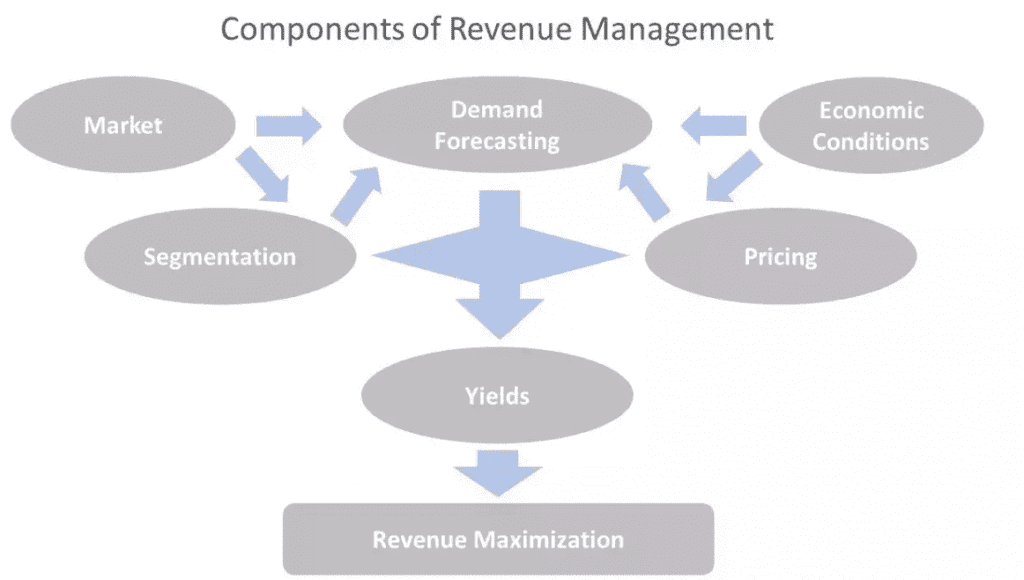
While RM workflow doesn’t require many changes, the underlying tech can increase its efficiency.
Image credit – Altexsoft
Want to know how every aspect of revenue management and pricing is affected by ML methods? Let’s take a look at the applications that use ML to drive this shift.
[Must Read: Ultimate Guide: Revenue Management System Vs Revenue Manager]
1. Segmentation
As per many factors, such as age, marital status, the number of new or past clients, and the purpose of their trip, guests are divided into segments. Precise segments affect price policies as well because price elasticity varies from client to client. ML enables precise grouping and the creation of specialized customer products based on their needs and price sensitivity.
Clustering, an automatic segment method based on unseen links between many data variables, is another use. In fact, methods of clustering can be used to refine your segments and add rich customer insights to them. These may be the root causes of customer lifetime value and in-hotel behavior. It is important for revenue management and pricing.
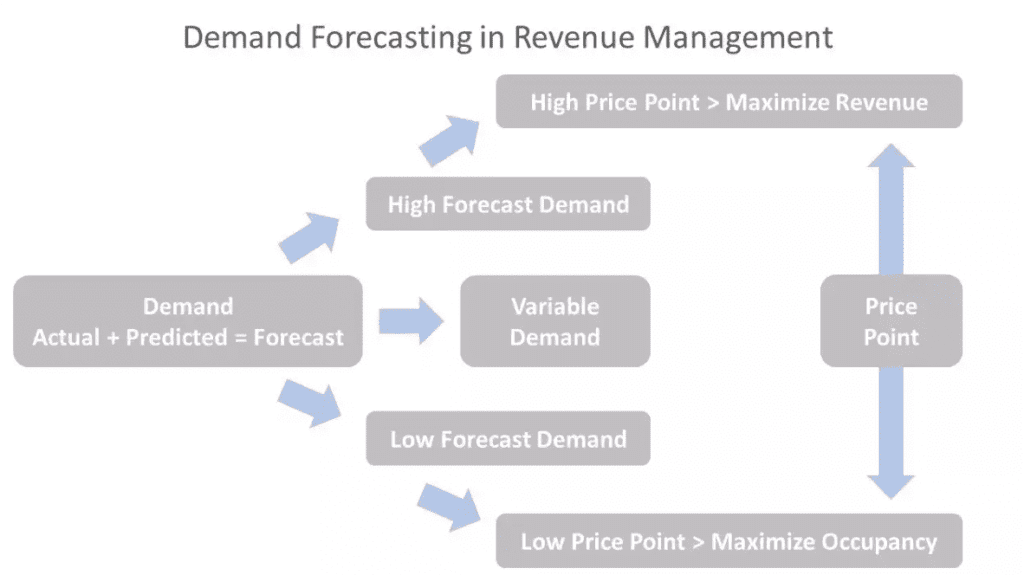
During high-demand periods, hotels must maximize revenue. During low-demand periods, hotels must maximize occupancy.
Image credit – Altexsoft
2. Demand Forecasts
Do you realize? Demand forecasting is a crucial aspect of revenue management and pricing. Here, ML takes the place of older methods like “same-day-last-year,” simple moving average because they lack accuracy and don’t account for a lot of the factors affecting demand.
Data from travel APIs can be streamed into an ML-based system to analyze market dynamics. As a result, the system evaluates the occupancy of nearby hotels, rival prices, public events, types of rooms, etc. A demand forecast offers vital data for pricing across customer segments and enables the choice of a suitable distribution plan. It may examine what guests want and define their price sensitivity. Do you want to know more? Read below.
3. Yields
Are you aware that (YM) yield management is what works with room inventory? Do you know that it is crucial for revenue management and pricing? In the end, it will maximize profit and revenue while limiting how often hotel rooms, meeting rooms, and restaurants are used. When there is a strong demand for a product or service, the yield management concept aims to maximize revenue and occupancy.
In order to do this, inventory management fixed expenses must be fast-covered. When the percentage of fixed expenses is higher than the percentage of variable costs, the method used is very crucial. Fixed and variable cost contrasts pay for overhead and then add to profits.
The decision-making process for picking the yield strategies for many client segments can be automated in this situation thanks to AI-based tech. The system should be able to create the best offer using one or more yield methods in real time because the same room may be desired by many clients. The machine learning future scope is immense.
4. Pricing
Did you know that a vital part of Revenue Management is dynamic pricing? It offers flexible room prices that vary by supply and demand. In turn, this boosts revenue and occupancy rates by enabling hotels to respond fast to shifting market values. Hotels can use many pricing methods as per customer segments, demand, and supply analytics. Applications that are data-driven increase the success of pricing strategies.
Still, finding revenue management companies for hotels? Read till the end.
Learn About Our Experts & Revenue Management Strategies
Machine Learning Based Revenue Management and Pricing: Data Sourcing & Approaches
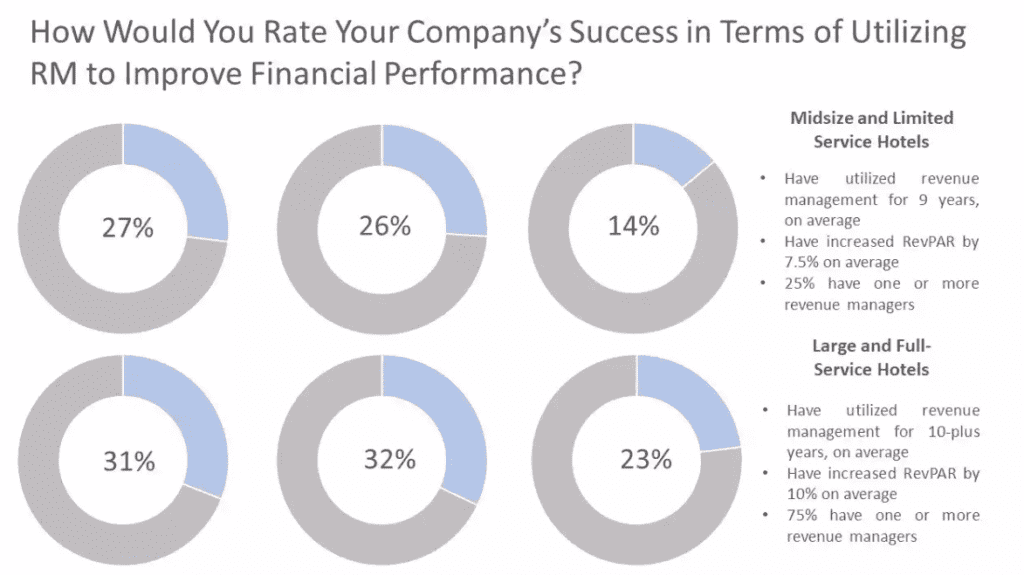
Rate your company’s success in terms of using RM.
Image credit – Altexsoft
All Machine Learning systems and applications rely on the accuracy and volume of data that comes from many sources and are then examined. The algorithms used to create demand, price, and YM systems in the hotel sector may involve various factors. Let’s examine the many types of data that can be gathered and how they might be applied to create an ML-driven RMS. It will help in revenue management and pricing.
1. Internal Data
Common tracking tools like CRMs or internal booking engines can be used to collect internal data. These are the main factors in this category.
a. Type of room
b. Dates of arrival and departure
c. Revenue by day
d. Purpose of travel
e. Room rates
f. Dates of booking, etc.
These details are easy to connect with website behavioral data. It is often collected and kept in the PMS and CRM. Segmentation and YM are two major areas of use for internal data.
1. Segmentation – CRM data gives hotels insights into their most loyal clients and improves their know-how of price elasticity within segments.
2. YM – The ideal allocation of rooms among clients can be created using real-time data about inventories.
Discover Revenue Management Tools Used by Major Brands
Demand Forecasts
The market-related data makes it possible to assess supply and demand dynamics. Publicly accessible data falls under this.
a. Rival rate data
b. Flight demand
c. Online reviews
d. Guest count
e. Stay dates, etc.
Hotel owners can obtain data from travel APIs about the level of rivalry and how well-liked a place is. In our thorough analysis, take a closer look at the accessible travel and booking APIs. Since it is impossible to develop precise prediction models without this knowledge, market insights are the primary source of data for demand forecasts.
2. External Data
Data about current events and weather reports are combined with external data. The external factors also have an impact on consumer purchase intent. Travelers with kids will be more inclined to book a long stay close to a warm body of water than solo travelers.
These data sets often come from sources like OpenWeatherMap API or Picatic API. These APIs may contain the data below.
a. Pressure
b. Event dates
c. Wind speed
d. Event tickets sold, etc.
Tourists swarm to public activities like sports and festivals. This data can be gathered using the tours and activities APIs offered by many travel suppliers. For instance, the Expedia Things to Do API enables the sourcing of data on events and activities for the next 15 days in a selected location.
Local media outlets are another source of external data. You can gauge how long visitors might be willing to stay somewhere by looking at the current mood. This is why it is crucial to use external data for demand forecasts in revenue management and pricing.
User Behavior Data
Studying user behavior involves a thorough grasp of behavior patterns. The key factors to consider are:
a. How much time is spent on a website
b. Clicks
c. Type of device
d. Referral sources, etc.
Analyzing behavior data lets you identify price sensitivity and room demand. It is great for segmenting users of a website, notably those who did not log in or were making their first visit.
Social Media Data
Social media user-generated content also offers useful insights into what customers want. The tweets, posts, likes, geotags, images and text emotions make up this set of data sources. Social media is often used to assess and forecast traveler interests and needs. Tweets, posts, and geotags are useful factors for demand forecasts since social media data helps identify locations. Are you unable to find the best revenue management solutions or hotel management companies in India? Read below.
[Must Read: 10 Tips to Increase Your Hotel Revenue Using OTA Management]
Final Word: Machine Learning Has Redefined Revenue Management and Pricing
A vital task in the hotel sector is revenue management and pricing. While the general revenue management concept has been around for more than 50 years, hotels have just begun to use it. Can’t believe it? We have already discussed revenue management benefits in previous articles.
96% of hotel owners believe that the key to RMS’s success is historical data. The execution of RMS can benefit hotels in many ways, such as by boosting profits, and occupancy, and saving time and cost on pricing and reporting. Small and medium-sized hotels are bad at managing revenue. The use of data-driven pricing software enables a 5–10% increase in ROI. The average increase in RevPAR is between 7.5 and 10 percent. With 97% of hotels using the strategy, high outcomes are achieved.
Systems for managing revenue are more effective thanks to ML. The main features that enable beating legacy systems in deciding price and time to create the best offer and maximize revenue are real-time data processing, personalization, and automation. Engaging external data science experts to develop segments and forecasts is a smart practice. These solutions include acquiring user data.
Looking for hotel revenue management solutions used by top brands like Ramada and Hilton? Do you want to capture more hotel bookings? Do you want to become a market leader? Searching for the best revenue management company in India? Join Revnomix and be a part of the 500+ hotel owners and managers. Discover how the best revenue management services can unlock your revenue potential. Finding the best RMS as well? Look no further than Revseed!
